Upscaling Impressions
Contents
You could be in single BNC mode or dual BNC mode (to unlock a million taps). If you’re using a single cable, you’ll be able to go up to 352.8 kHz (white). Please refer to the upsampling chart on page 31 of the manual.
One thing to note: There are two BNC outputs – BNC 1 and the S/PDIF. BNC 2 is only used in dual BNC mode (white). When in single BNC mode, the BNC 1 output sounds better than the S/PDIF. It’s quieter, more consolidated, and has more accurate timbre. The BNC 2 output is only engaged in the dual BNC (white) mode. If you try to use the BNC 2 as a single BNC output – it’s going to sound a bit off.
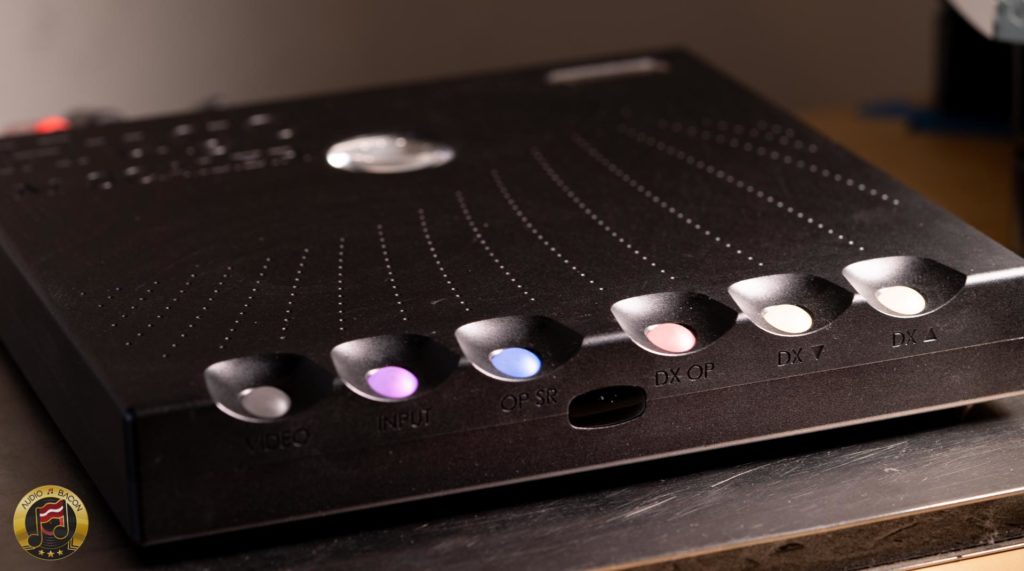
From 1X to 16X
I had a lot of fun doing the listening tests for this portion. In short, I feel it’s like focusing a camera lens from a distance. The higher the upsampling – the more focus you get – and the more clearly you see what’s actually there.
To keep things sane, the following is assuming 44.1 kHz files. I’ll be using the Chord Electronics DAVE in dual BNC and single BNC mode (BNC 1 output). The beauty of the M Scaler is that you have your choice in the degree of upsampling. With the variety of musical tastes and DACs – it’s a great feature to have. Many will prefer the maxed out 16X and some may prefer something in-between.
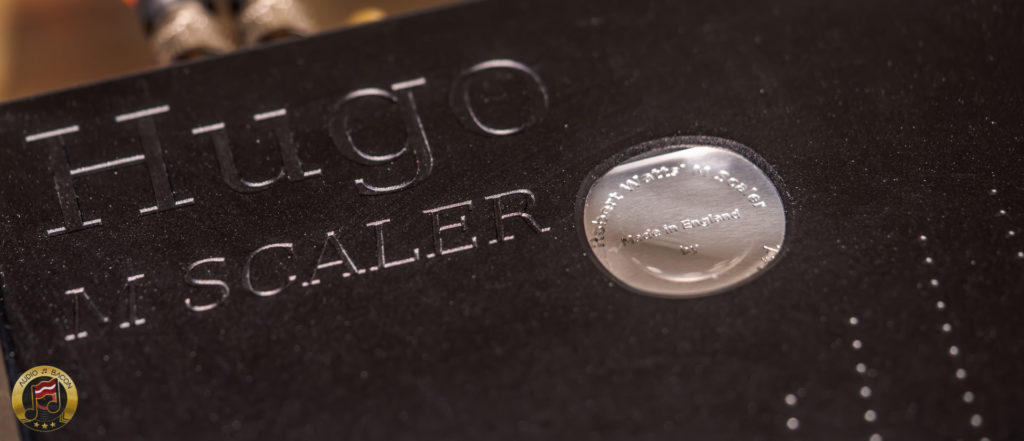
One of my favorite albums for testing was Jeff Goldblum and the Mildred Snitzer Orchestra’s The Capitol Studios Sessions. Just fun and high-spirited recordings. As part of my “routine,” I usually try to watch these live recordings after listening to them in the system. It helps in determining how well the essence of the music is captured and reproduced in a system.
Red – 1X (Pass-through Mode)
This mode essentially takes the original input signal and allows you to output it via S/PDIF to your DAC. Surely you didn’t buy an HMS to keep it in this mode. However, I’ve found that it sounds better than a direct USB connection to every DAC I’ve connected it to.
The HMS seems to be isolating some noise before sending it off to the DACs. This resulted in a quieter, more consolidated, and more well-formed sound. Also, a very noticeable improvement in stereo imaging and outlining.
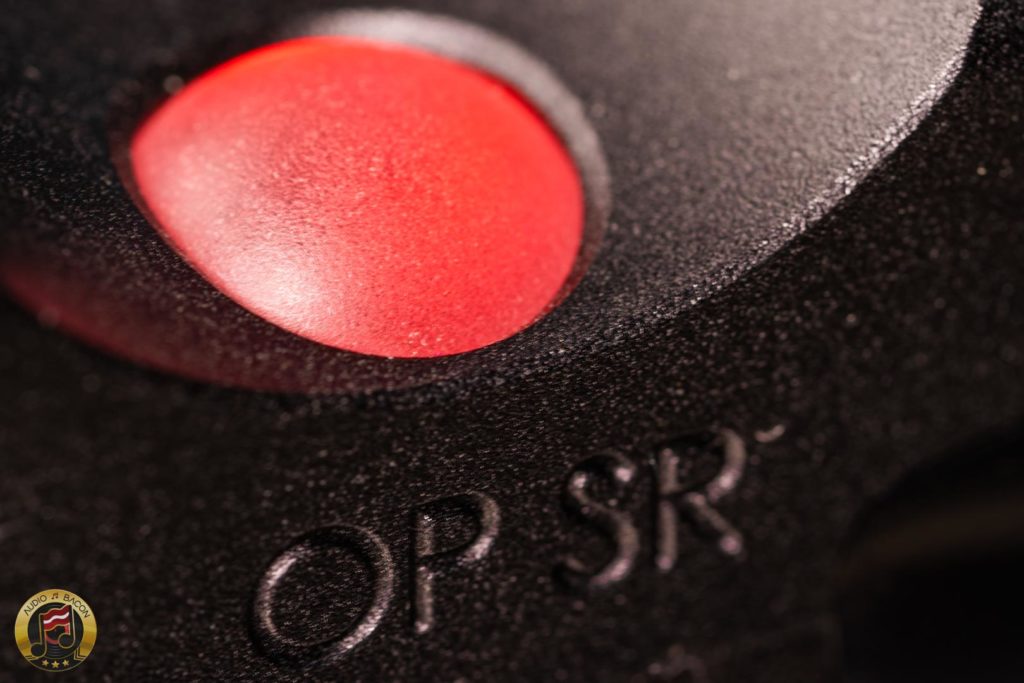
To elaborate…
- Much better focus, timbre, tone, and clarity.
- Even with no upscaling, the tonal character is very natural. You’ll get more insight and resolution as you scale up.
- Direct USB to DAVE sounded more grey and softer. The midrange is “fatter” and less textural.
To my ears, just having the HMS in the system already improved sound quality – even in bypass mode. Given that the DAVE already sounds great – this isn’t a small deal.

Green – 2X
The first step in upsampling gives the music shape. In other words, it unflattens the soundscape. At the same time, it gives the instrumentation and voices more heft and smoothness. The music essentially “snaps” into place.
In addition, it sounds quieter and more vivid. Pass-through mode sound a bit crowded and confused in comparison. This is obvious in albums such as Opus by Al Di Meola and Alice in Chains’ Unplugged. The 2X upsample rate does make you itch for more though…hence I’m rarely in this mode.
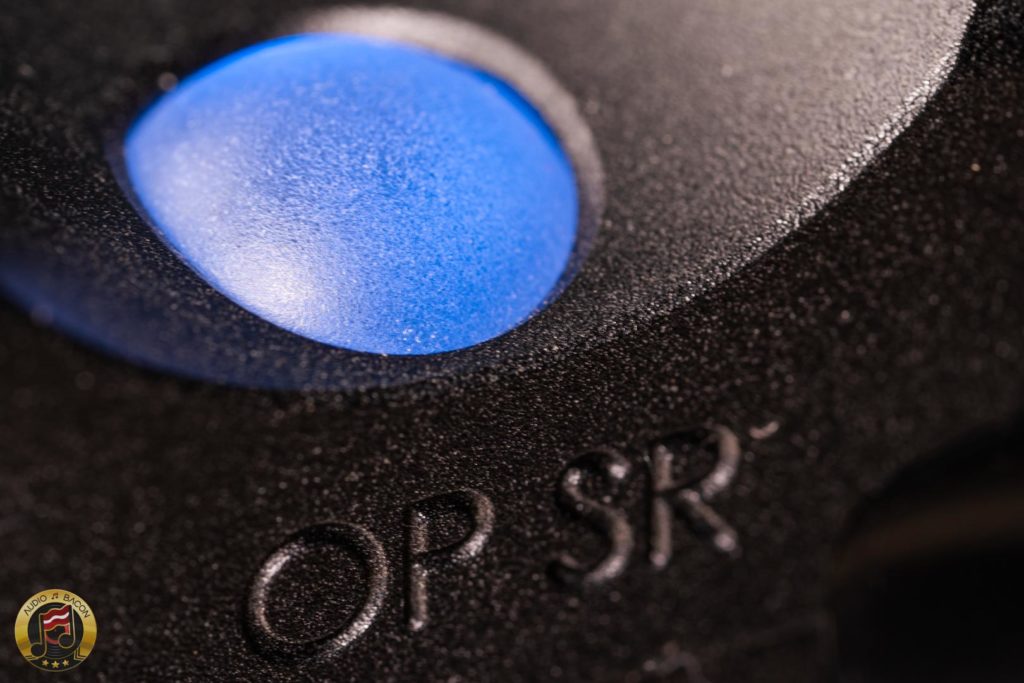
Blue – 4X
I gravitated towards this mode for a lot of my listening. On many occasions, I sat back and thought “Yeah, this sounds right.”
This upscale mode (176.4 kHz) places this combo in end-game territory. As such, it may be the sweet spot for many. For one, you don’t need two BNC cables. In addition, there’s a perfect balance of warmth and resolution. You’ll get the tightness and fullness of the 2X while retaining enough of the resolution of the 8X (in the next section).
I also found this mode to be more genre-independent. It’s more “earthy” for hip-hop, R&B, and rock. Rihanna, Kurt Cobain, and Adele’s voices have more soul. For example, the vulgarity of Nicki Minaj’s High School just isn’t as profound in the higher 8X and 16X modes. Admittedly, there is less of that lifelike resolution – but the difference in tone is apparent.
In comparison to 2X, the sound becomes more forward and fuller. It also sounds (surprisingly) warmer. Voices are more fleshed out and instruments have more dynamic strides and contrast. There’s more tonal assortment in comparison to the previous two modes. Bass gets punchier, the pace is more engaging, and the rhythm of the recordings is in plain view.
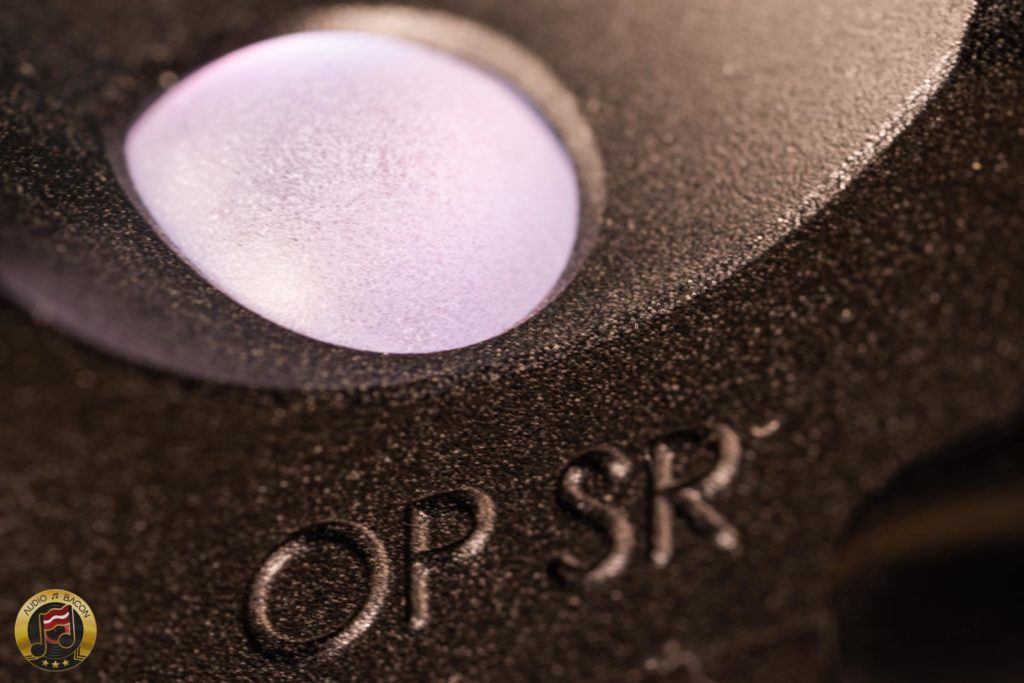
White – 8X (Single BNC)
As mentioned, you could only access this mode (352.8 kHz) via the single BNC mode. I recommend the BNC 1 output of the HMS.
In short, it strikes a very nice balance between 4X and 16X in tonal color, body, and resolution.
“Melodic with a slight warmth” comes to mind. Definitely not as spacious or detailed as 16X – but much more dimensional than the 4X. This mode gives performers more of a molded form. It does exchange some of the rich colors of the 4X. Sonic landscapes have better gradations and imaging is laser-focused. Tonal variations are also kept in check.
One of the biggest gains from moving up the scaling ladder is the bass definition (especially at 16X). You not only hear more of it, but you also hear how it bends, pounds – and with how much force. Lots of “how” something sounds within this mode.

White – 16X
This is the mode that sounds completely analog. You hear more of the congealed “material.” This includes the natural resonances of different makes of violins and guitars. You’ll get uncanny insight into the soul and personality of the singers. It sounds unbelievable – because it is. It’s almost like being in a dream world.
This is a huge jump in upsampling – and commensurate fidelity. This is where the music just wraps around you. It takes what sounded great – to something that sounded all too real. All veils are lifted and the level of articulation is extraordinary. Not only do you get an accurate perspective, but it’s also delivered in valiant strides.
Music is no longer just one holistic groove, but synchronous layers of texture, character, and timbre. It’s as far from a “blob” of sound as you could get. It essentially “folds back the skin” into something more tangible. The other modes sound a bit more confined and constricted in comparison.
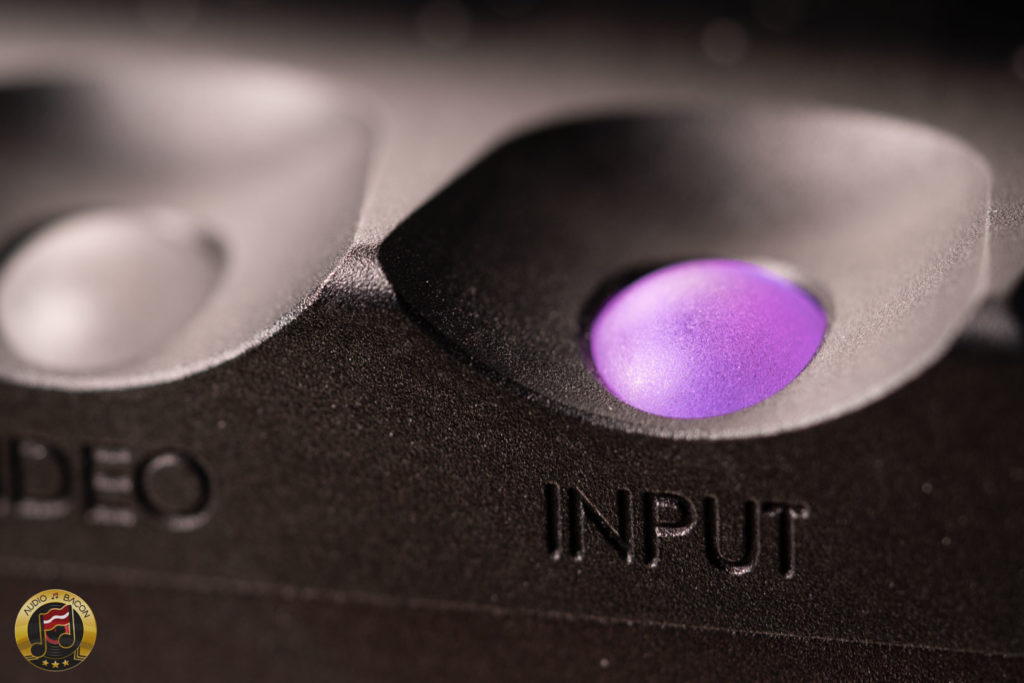
vs. 4X (Blue)
Going back to one of my favorite modes. The 4X (blue) is noticeably warmer and more forward – but not as free and vivid as the 16X. In comparison to the 16X, it can’t complete on transparency and noise floor. The 16X mode digs so deep into the mix that sometimes the warmth from 4X sounds more like a veil.
For example, with the aforementioned My Baby Just Cares for Me track with Jeff Goldblum and Haley Reinhart – we get two different moods. The 16X mode sounds way smoother. Almost porcelain-like and a little more laidback. More importantly, you can’t tell the vocal recordings were done with microphones. This is especially noticeable towards the end of the track where they share microphones for a brief moment.

With 16X, it sounds more like 3D objects are placed in front of you with lifelike separation of all the spectral variations of piano, bass, guitar, and sax. The 4X upscale is grittier, more stretched, and doesn’t have nearly the same level of delineation or 3D molding. But it does have more blood flowing through it. For that reason, I prefer 4X for vocal recordings.
Update (6/4/2019): For what it’s worth, I much prefer the 16X (DBNC) on the TT 2 over the 4X. You get both the contouring and the warmth (Filter 4).
Over the course of a few months, I found myself switching between the 4X and 16X modes. Although 4X is not as technically superior – I enjoy this mode for other genres and studio recordings – mostly for its warmer tone. I don’t get the impression of a live performance as I do with the 16X – but it’s still a wonderful balance of tonal color and resolution.
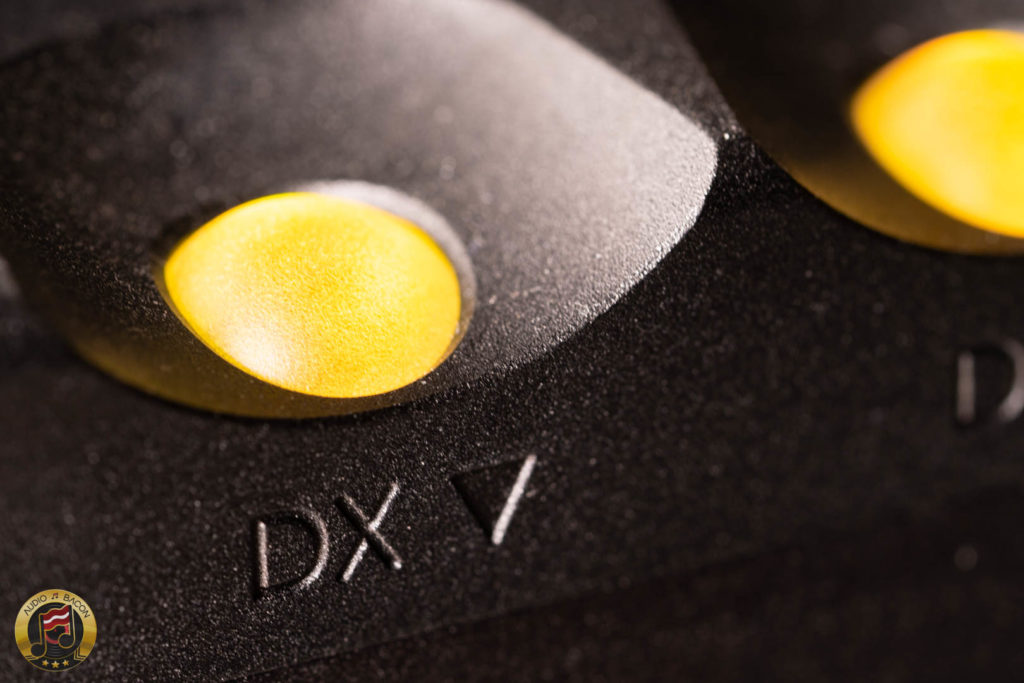
The Verdict
The level of resolution is absolutely stunning at 16X. One thing this mode does much better than the rest is dynamic extrusion. The system sings into free space rather than being confined closer between the two speakers. 16X has a far blacker background, more spatial clarity, and “floats” with more ease. Macrodynamics are explosive while microdynamics remains delicate – yet pronounced.
As far as resolution, clarity, and lifelike realism – this is the perfect baseline for any digital playback system. “Tuning headroom” if you will. Above all, when I paired this mode with darker and thicker sounding cables – the performance is sublime.

The 16X mode serves as the ultimate digital foundation for any tweaking you want to do with your system. It sounds particularly good for live recordings (musicals and orchestral in particular). I can’t imagine anyone desiring more transparency than what the HMS already provides.
In any case, you’re free to get amplifiers, speakers, and cables to adjust to taste. The 16X is more than just insightful – but is also perfect for terrifying your friends on how real a system could sound.






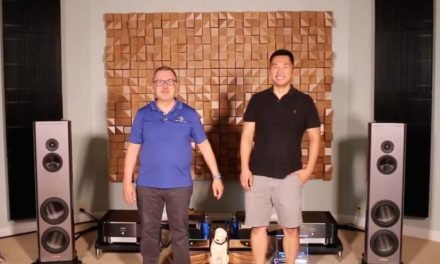


$5K, plus the $11k DAC to make full use of this device buys an awful lot of sealed vintage vinyl, no join-the-dots musical make-believe required.
As “…An open-minded electrical engineer and software developer”, are you proposing that GIGO (Garbage-In, Garbage-Out) is no longer true if the level of trickery is extensive- and fast-enough?
Honestly, if this ‘something-from-nothing’ reconstruction worked beyond being more subjectively-pleasing to the ear that is invested in hearing that difference, then its efficacy is easily tested — if you’re willing:
Simultaneously record at both 24/768 and 16/44 a musical instrument with a lot of high-frequency content and overtones beyond the range of Redbook (e.g., a crash cymbal) and then capture the upsampled output of the Chord at 24/768 playing the CD-resolution copy. Open the result in a Hex Editor with a range of descriptive statistical analyses (e.g., HHDs: https://freehexeditorneo.com/) and see how much it has in common with the Native 24-bit file.
Adding this information as an update to your review would provide a large degree of common agreement (or disagreement) regarding this device’s capabilities for your readers (who may be considering splashing out on the Chord on your recommendation) above and beyond what You find subjectively pleasing.
Of course, there’s no obligation to provide objective corroboration for your subjective listening impressions, but you ARE “…An open-minded electrical engineer and software developer” and should be as willing as you are capable…
cheers,
Sounds interesting. I’m open to doing these experiments at a later time.
In Signal Processing, upscaling is kinda interpolation. You certainly can’t restore the information already lost in lower rate sampling, but I don’t equal interpolation to GIGO processing!
If so called, Vinyl, though analog, is a different way of GIGO – lower DR, lower SNR, … to begin with and even human brain “interpret” that low quality signal, call we call it Higher Fidelity than digital? Probably not.
Noting perfect.
M Scaler is more than just interpolation. Is usesthe sinc (sin(x)/x) function that is the impulse function of the brickwall filter. With the sampling theory in mind this is the 100% correct interpolation. For a 44KHz sampling we are however bound with 22KHz music bandwidth, always. Information beyond 22KHz is lost forever. So no new information that is true but no need for a steep analog output filter.
From a scientific point of view, an empirical point of view, where you are coming from makes sense. But you’re not seriously suggesting that high end dacs and amps don’t improve the experience of listening to music are you ? Have you heard anything through Chord’s equipment ?
At the end of the day, charts and science cannot explain even why we listen to music. It’s something very deep with our connection the the universe and anything that enhances that is more important than something showing me a wave on a chart and telling me there is no difference when I can hear it.
Great review Jay! My experiences with the Dave, Hugo 2 and HMS match yours. Of course you’ve done a lot more testing than I have. As an aside and in response to Dave Page’s comments, 44K (correctly bandlimited on digitizing) is not necessarily garbage in. Rob Watts’ perspective (based on extensive experience, measurements and theory and reflected in the white paper you mentioned on page 1 of this review) is that much of the 44K 16 bit digital out there is actually fine it the aspect of the ADC conversion. The bigger problem is converting from digital back to analog and that’s what the HMS enables so well. Having lived with a Chord Dave, an HMS and good power conditioning, etc. I can say that my listening to CD (or streamed CD quality) and also true HD content has pulled into roughly the same league as my highend vinyl rig. Sure there are differences, but this is a major step forward to make digital sound like analog. I too have spent many hours late into the night listening to my rig. I find this a really good way to determine my engagement – the Dave, HMS and my Focal headphones make it such that it’s hard to go to bed! One question: have you done any testing with say a Hugo TT 2 directly into efficient small speakers (with an augmented powered sub). I’m considering such a system for my kitchen/dining area.
Thank you for your insight, Bob! I was actually waiting for parts to build my own speaker adapters to drive with the TT 2 (hence the delay). It also took some time to get custom headphone cables built for the XLRs. What can I say, I like to be thorough lol Are there any particular speakers you’re thinking about driving them with?
Great that you’re about to try the TT2 direct into speakers! I don’t have any particular speakers in mind although I’d be using them with a Rel T5 sub. The speakers themselves would need to be pretty efficient and also fairly small (~15 inches tall or so and maybe 10 inches deep at most, maybe 8 inches wide). Super loud isn’t important for me – I’m trying to just fill a space with wonderful music (prefer a really large sound with great presence and tone. Super precise imaging is nice but not critical). Also, these speakers must go right up against a wall.
Hi Jay – thanks for one of the best audio websites out there today. I wanted to check in on your testing of the Hugo TT 2 driving efficient speakers. I am building some open baffle speakers using a 100 db efficient full range range driver and would consider buying a TT 2 if it sounds fantastic driving efficient speakers. What thoughts do you have on this or can you provide a link to your TT 2 review if you covered it there?
It still depends on speaker design, but I’m 99% sure you won’t be disappointed if you use the TT 2 (XLR) to drive your 100dB speakers. It has tonal qualities I enjoy more than even the Chord DAVE. I’ve only used the XLR outputs to drive the Abyss headphones so far
I’m planning on doing a video review of the TT 2 soon. Any efficient loudspeakers under $1,000 you’d recommend for the review?
I’ve been researching drivers and not speakers so not sure I can be of much help here – the usual suspects I think of come from Klipsch (RP-600M), Tekton Design (various models), and Zu Audio Omen Dirty Weekend II. I have no experience with these speakers other than listening to the Klipsch at a large box store…..
The drivers I want to run are Lii Audio Crystal-10s in an open baffle design.
Thanks
A few other ideas speaker wise – check out the Caintuck Audio site for their open baffle speakers and email Randy for his opinions on which might work best for your review. Also Buchardt S300 perhaps.
Hello Jay. I’m using hugo2/mscaler now and have two options next. Either add a TT2 to my mscaler or trade in my hugo2/mscaler and pay the difference and get a new dave. Im leaning towards dave but i’m reluctant to part with my mscaler. The caveat here is that if i get a dave i will need to wait at least a year to buy another mscaler as my budget for audio will have reached its limit. I use oppo pm1 headphones. thanks.
The DAVE sounds more convincing in transparency and resolution – and probably flow and layering as well. I think the tone of the TT 2 is more of my tastes though. If you do mostly headphone listening, you’d be fine with the TT 2 + M Scaler. As I’ve mentioned, if you don’t have a better power cord for the DAVE, it’s even more of a reason to keep the TT 2 + HMS.
Hey Jay, do you still have the Terminator loaner? The new user replaceable DSP board is coming in a week or two for it & among an improved USB functions & dual AES support, it will add a slow filter mode. This might change the perceived clinical sound you were hearing.
Unfortunately, I had to pass the DAC to another reviewer.
Thanks Jay. Will keep you up posted as i continue my chord dac journey. Your advice is much valued. I just wonder if a third party power cord might actually do some harm if it is not specifically designed to run with a dave? The stock one at the least is designed for dave.
Thank you for your kind words. Hm, I haven’t had any problems with any power cords with the DAVE – even with DIY cables.
Just a side note: Listening to the TT 2 @ 16X right now and it sounds so damn good. It has a truer tone. But the DAVE sounds more “real” in every other way.
Interesting review Jay. Has Chord just provided a more cost effective upgrade path for Blu owners with the M-Scaler at half the price of a Blu Mk2?
Some owners of the Blu2 and HMS say the differences weren’t significant on their end. In my case, it was appreciable enough. It could be the cables or something else in the system. YMMV. I’ll clarify that in the review.
As far as an “upgrade” path, I’m not sure if that’s even possible without sending the unit in. I wouldn’t expect Chord to do that since the HMS was released a little over a year (?) after. Improvements are expected – that’s just how it goes.
Jay,can you expand a bit further on the Hugo 2+ m scaler? Assuming one has a Hugo 2, ~5k , and a desire to update, would one be better served by purchasing an m scaler and using the Hugo 2/M Scaler combo OR purchase the TT2?
In short, would the better option be Hugo 2+ scaler OR Hugo TT2 (and pros/cons of each?
This review was exceptional and answered questions many have. Could you give your thoughts on the scenario above?
Others may disagree, but the Hugo 2 is definitely on the cooler end as far as tonality. Even at its warmest filter – the TT2, to my ears, has a more natural, warm tone. So if you’re a stickler for tonality, I would go TT2. However, if you prioritize depth, resolution, soundstage, clarity, transparency – go with the Hugo 2 + M Scaler.
you can always plug a warm analog amp on the analog output of the Hugo2 if you want a warmer sound of of the combo. Hugo2 has always been on the cold side, so if you like it the way it is I doubt it would matter.
M.
GO WITH TT2 IF YOU LATER PLAN TO ADD AN MSCALER. IF THAT IS BEYOND YOUR BUDGET THE HUGO2/MSCALER COMBO DEFINITELY OUTPERFORMS A SOLO TT2. THE MSCALER IS OUTSTANDING. TRY YOUR SOURCE WIRED INTO HUGO2 INSTEAD OF PASS THRU ON THE MSCALER FOR A TRUE COMPARISON OF HUGO 2 VS MSCALER WITH HUGO2. SO IF HUGO2/MSCALER IS YOUR LIMIT GO THAT WAY. I AM USING HUGO2/MSCALER FOR THE LAST YEAR HOPEFULLY UPGRADING TO TT2 SOON.
Folks this isn’t really rocket science.. the whole point of the scaler is to take the original music you play and “enhance” it. Fill in the gaps.
I have the Dave/blu2 combination with usbultra and world clock etc.. and to be frank I can’t tell the difference between a mp3 from itunes and a high resolution file when I play it via my system with the scaler.
I have some exact same recording in mp3 and high res and they sound the same.. and I’m not just saying that I listen hours per day almost every day and that’s what the chord scaler can do…..
Now of course.. it won’t fix a completely fumbled recording no matter what… source is important… but as long as its a decent mp3 you won’t notice the difference……. that has been my experience…… Regards…
How does this differ from and improve upon the upscaling that you can already do in Roon?
Fantastically comprehensive and insightful review, thank you!! I’m interested in hearing what it does to my h2 , but the adapter’s sound like a weak link. Please would you consider posting the wiring diagram for you diy adapter. Thanks again :):)
If you record the enhanced playback to a CD 16k 44. Will they processed recording be improved or will the M Scaler improvements be lost to the recording limitations?
My guess is that it’ll improve.
Hi Jay, thanks for the REALLY helpful review <3 i have a Question Regarding M-Scaler's Filters
Range is from Red to White (x16)
from what i understood, Blue is the sweet point and kind of the best of both sides. white is warmer.
so if i listen to J-pop for example. which filter will suit it more? Red? Green? since i noticed that the others keep adding warmth, and J-pop want fun/fast speed and decay for toe tapping.
what do you think? thanks in advance.
does 16x have same treble fun for J-pop as x4? or less as its focus on being accurate. i am using TH-900
have a Question. i notice Blue is the sweet point and kind of the best of both sides. white is warmer.
so if i listen to J-pop for example. which filter will suit it more? Red? Green? since i noticed that the others keep adding warmth, and J-pop want fun/fast speed and decay for toe tapping.
which filter got the most Treble Sparkle/Energy/Extension/in your face persay.
what do you think? thanks in advance.
Interesting, I feel white is definitely cooler as far as tonal color. I have my HMS on blue for 99% of my listening. If you want speed/decay, stick to white. If you want really warm – red. If you want balance, blue. Green is a little weird.
Hi Jay, Thanks for this awesome review.
I have a DAVE with a Leben cs 1000p power amplifier. You recommend the M Scaler in my case?
Thanks!!
Manel
Hi Jay, I have a Qutest and have been thinking about upgrading my DAC. Was initially thinking about the Terminator based on reviews but now I am thinking to just pair and MScaler with my Qutest. Could you give me some brief thoughts about the Qutest/MScaler Combo vs the Denefrips Terminator. Which would you choose ?
I haven’t heard the latest iteration of the Terminator, so I could only speak on the my own experience. If you enjoy more hype, resolution, soundstage, and an overall cleaner sound, go with Denafrips. If you want something more organic, smooth, and tonally accurate go with the Qutest + Mscaler. However, I would strongly suggest finding someone who has done comparisons with the updated Terminator before purchasing.
I must contribute that you are the most thoughtful, patient reviewer I have ever encountered, which is fantastic. Don’t waver!
Jay, thank you this is a great review,
– this difference between “truer tonality” and “more real” is at the core of your explanation between TT2/HMS and DAVE. I don’t understand it fully. Can you please use a piece of music to illustrate what you mean?
So if I’m listening to Mahler 5th symphony, the DAVE is closest to making it sound “real”, ie, as if I am there in the hall, but the tone is not as “true” as the TT2/HMS? Meaning the DAVE does not reflect the bass-mid-treble as accurately?
PS What is your primary DAC at the moment?
Wonderful site, love your passion!
R
Great review. However you didn’t answer the question that I’m stuck with at this point. Budget will only allow either a TT2 or a Qutest+M-scaler. Your thoughts on these two combos?
Roscoe